It was the day I’d been waiting for since I first arrived in Dover. I was finally going to visit the magnificent medieval castle which perches atop the white cliffs and casts its imposing shadow over the town below. It was another beautiful September day, and cousin Andy was keen to show me around.
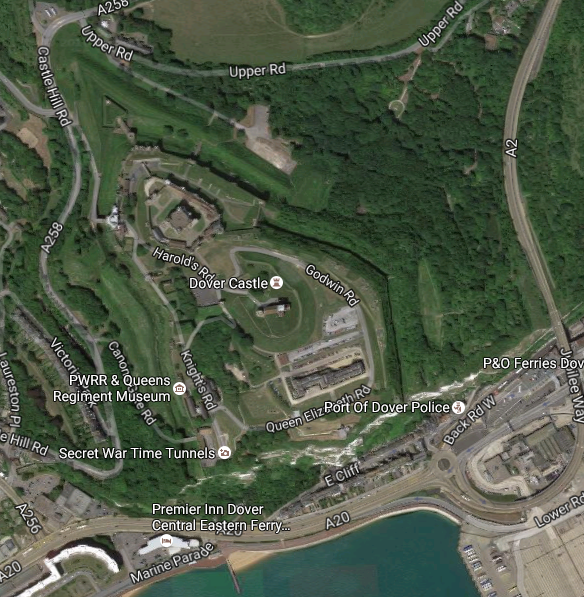
Admission is normally £18.30, which seems pretty steep, but with an English Heritage pass (which I have now managed to obtain) entry is free. We obtained our wrist bands at the booth and then headed up the hill to the thick stone gateway through the outer wall of England’s largest castle.

Inside we immediately found a WWII-era artillery piece overlooking the harbour and town below. Yes, even as late as the 1940s this fortress was considered key to the defence of Dover and I do imagine it would be highly defensible even in the face of modern artillery. As I’ve learned reading about the Kiwi soldiers’ travails in Italy in WWII, an historic fortress that has been pummelled to smithereens is often just as hard – or harder – to take as one that is still standing in all its glory (see Montecassino Abbey which remained unconquerable even after being blasted into oblivion). So there’s at least one good reason to not pulverise irreplaceable historic buildings. Besides, the cliffs below are riddled with tunnels both ancient and modern, in which defending troops could easily find refuge.
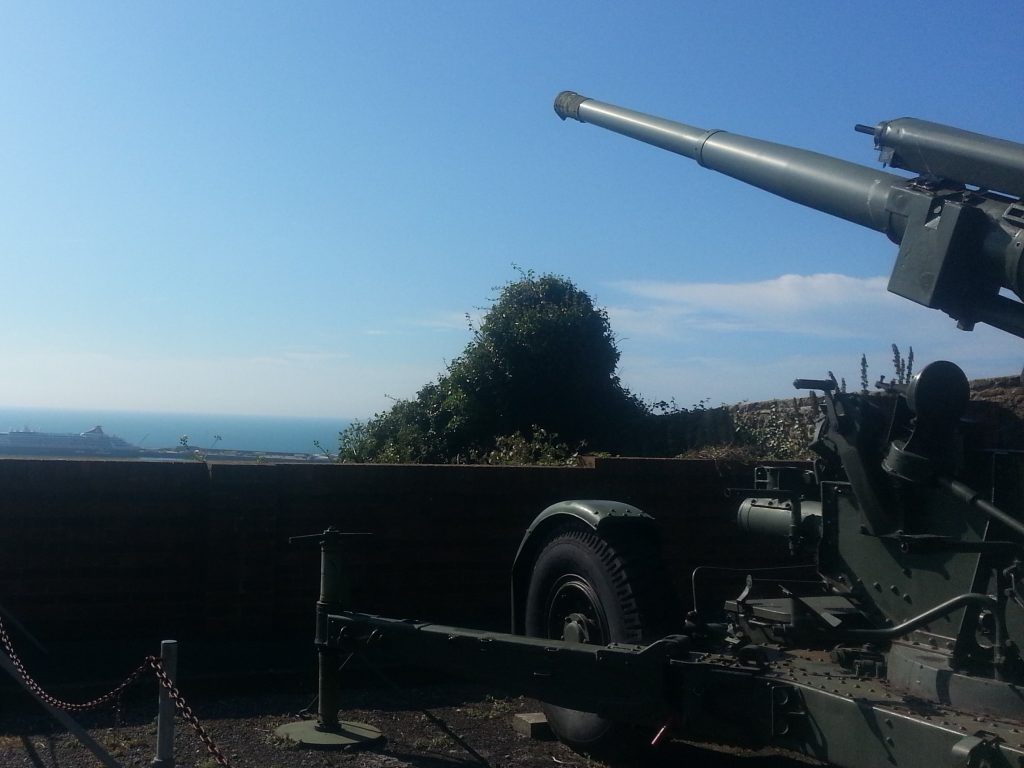
We headed further up the hill, past the entrance to the old underground hospital (open for tours), admiring the view over the wall to the town below. We passed under another gate and found a full-size trebuchet before us in the courtyard. This was also the spot where visitors can enter the medieval defensive tunnels, added after the walls on this side of the castle were breached in 1216 during the First Baron’s War (when some rebellious English barons invited Louis VIII of France to take the English crown). The attack was ultimately repelled but these extra defences were added just in case.
Andy waited with “the bab” – his infant grandson – while I ventured down the steep spiral staircase into the darkness below the castle. Down in the tunnel the smooth floor sloped down steeply, requiring a careful tread. The tunnels include a caponier – a defended passage across the castle moat – lined by cannons which would blast invaders attempting to reach the castle walls. I am definitely forming the opinion that I’d rather be inside the castle trying to keep people out than outside trying to get in.
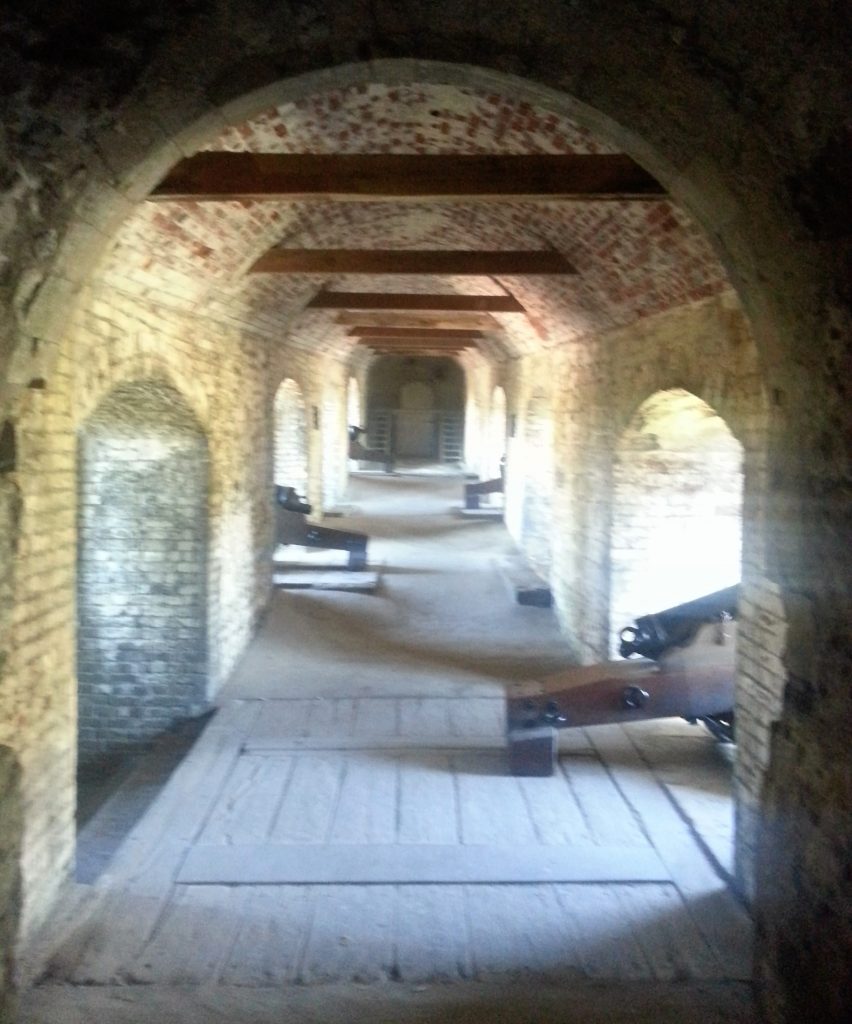
The remaining tunnels lead to old sally-ports and a couple of guard rooms, which are late additions from the 1800s.
I finished my exploration and found my way back into the light, joining Andy and continuing our circuit of the castle grounds. Our next stop was the Roman pharos, one of two lighthouses built about 46-50AD (the Romans invaded England in 43AD). The other stood on the hill to the west of Dover, and we will visit it in a future post.
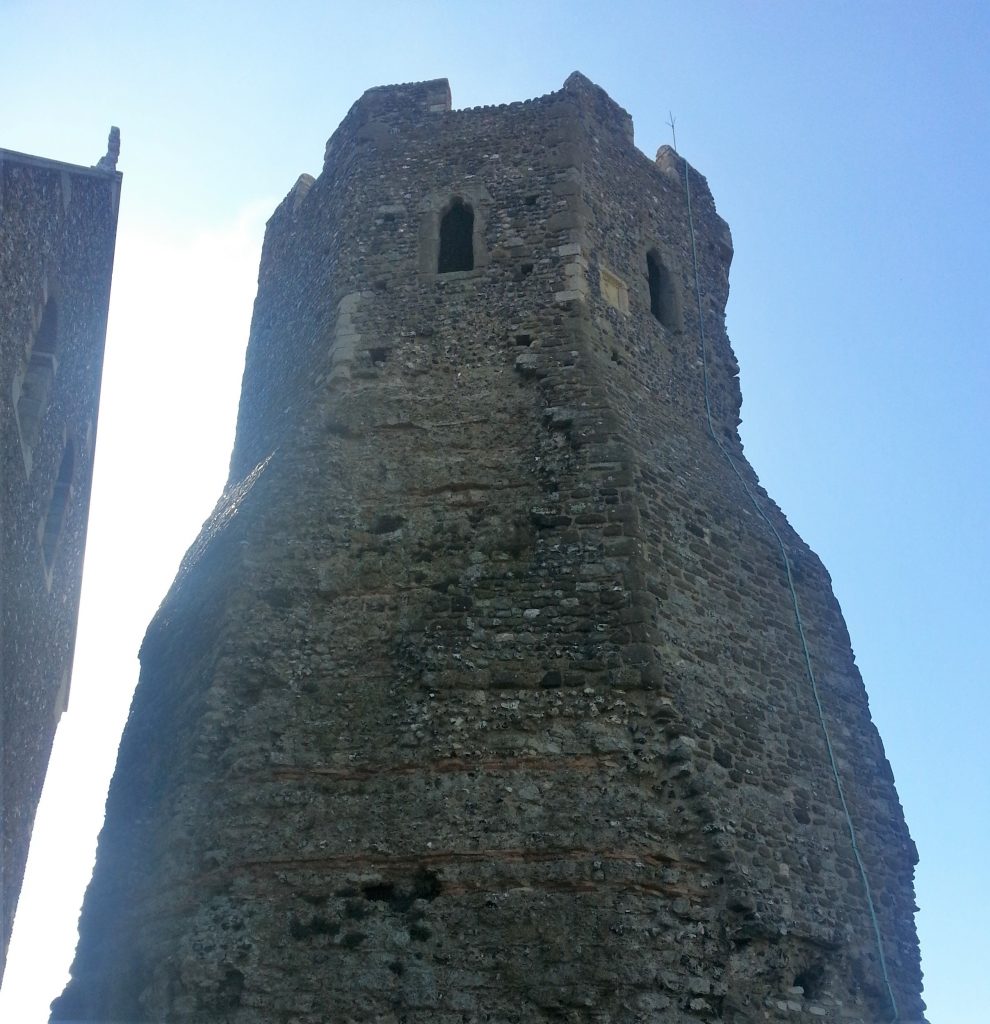
Today it stands 19 metres high but the original structure would have been 24 metres. The top level is actually a medieval reconstruction performed when the old light house was converted into a bell tower for the Saxon church next door, St Mary-in-Castro.
Accordingly I turned my attention to the nearby church, wading through a group of touring school children to get inside. Built in about 1000AD, it’s hard to believe that this church has fallen into ruin and disrepair more than once over its millennium of existence. It was fully restored again in the 1860s and is once again a working church.
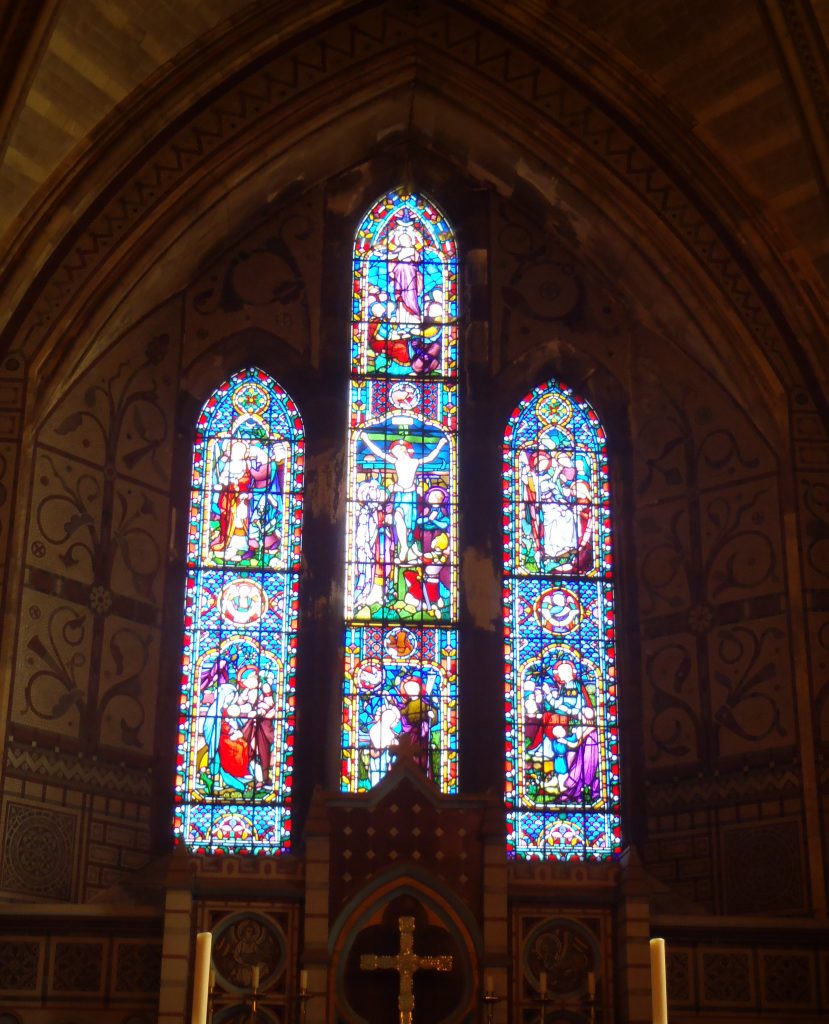
Having admired the opulent interior, it was time for the main attraction – the castle itself! This spectacular edifice partly owes its existence to our old friend Thomas Becket. After Henry II’s fateful hint resulted in the murder of the troublesome priest in 1170, pilgrims began flowing through Dover en route to the martyr’s shrine in Canterbury. Henry needed to save face, so he built this grand monument to his royal power and wealth between 1179 and 1189. Here he could entertain high status travellers and stamp his mark over the gateway to England.
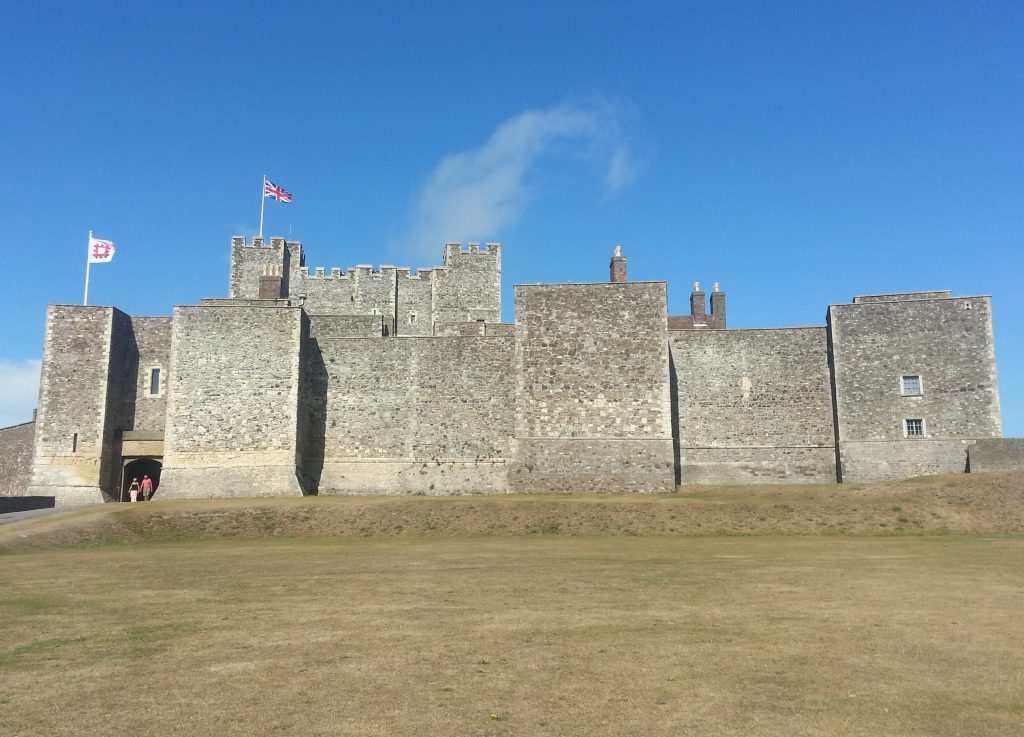
The castle itself is 25 metres high, 30 metres square and boasts walls up to 6.5 metres thick. In the past decade English Heritage have spent millions furnishing this castle in all its medieval splendour. Entering at ground level, I found myself in a kitchen, complete with enormous cooking pots, replica slabs of meat and various other delicacies frozen in mid-preparation. Clearly there is going to be a feast on one of the floors above!
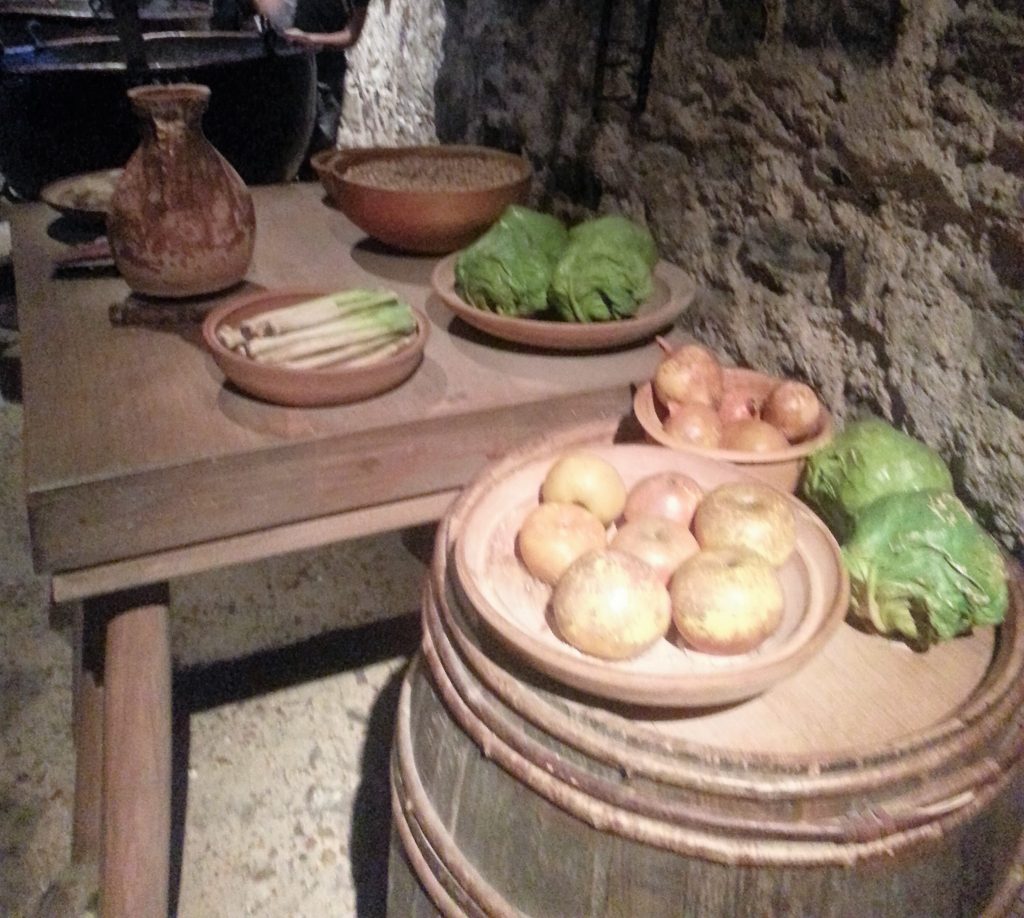
Upstairs was a guest room, which even had a real fire burning in the fireplace. My one surprise was the amount of bright colour used in the décor – Game of Thrones had me convinced that such castles should be dark and grim, not bright and cheerful.
Further above was the banquet hall and throne room.
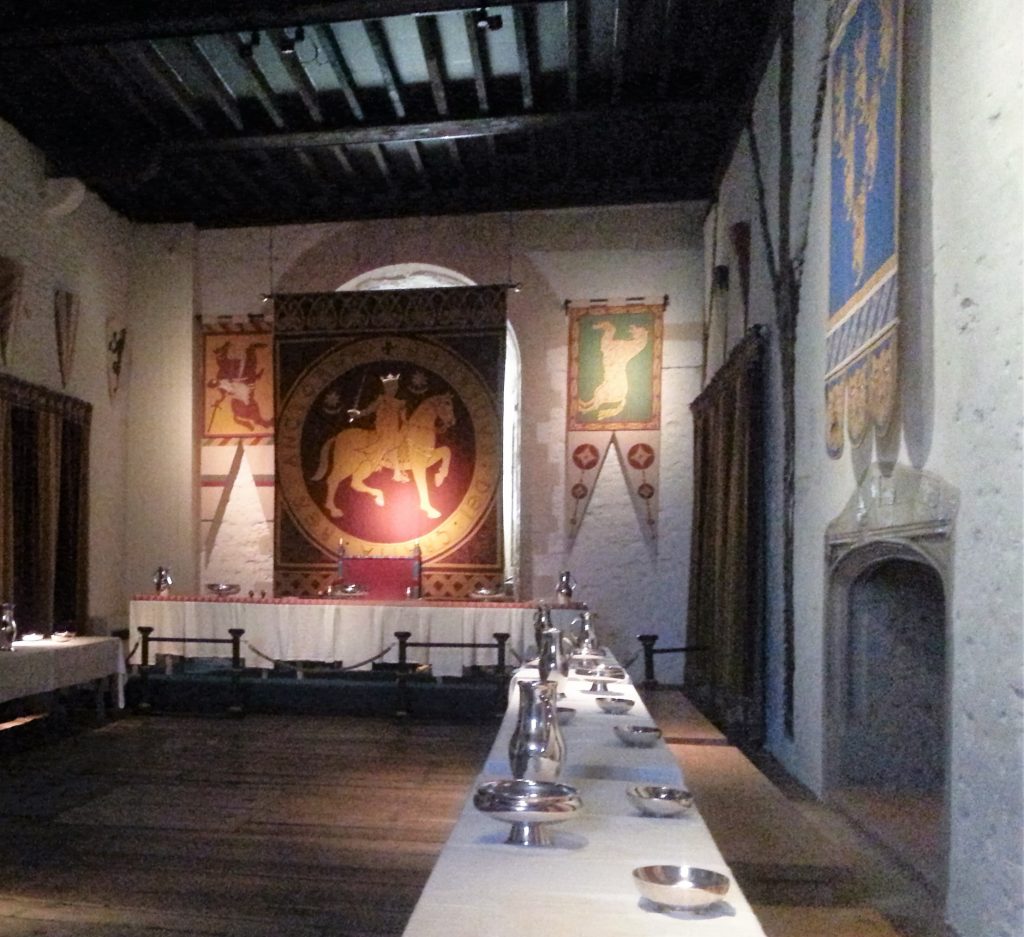
On the second story is also the royal chapel, (grudgingly?) dedicated to Thomas Becket. Tucked away, I found guardrooms, the privy and the tank for rain water to supplement water from the well below.

A few more narrow staircases led me out on to the roof of the castle, from which I was able to look back over Dover, or over to the pharos and church, or down to the harbour below.
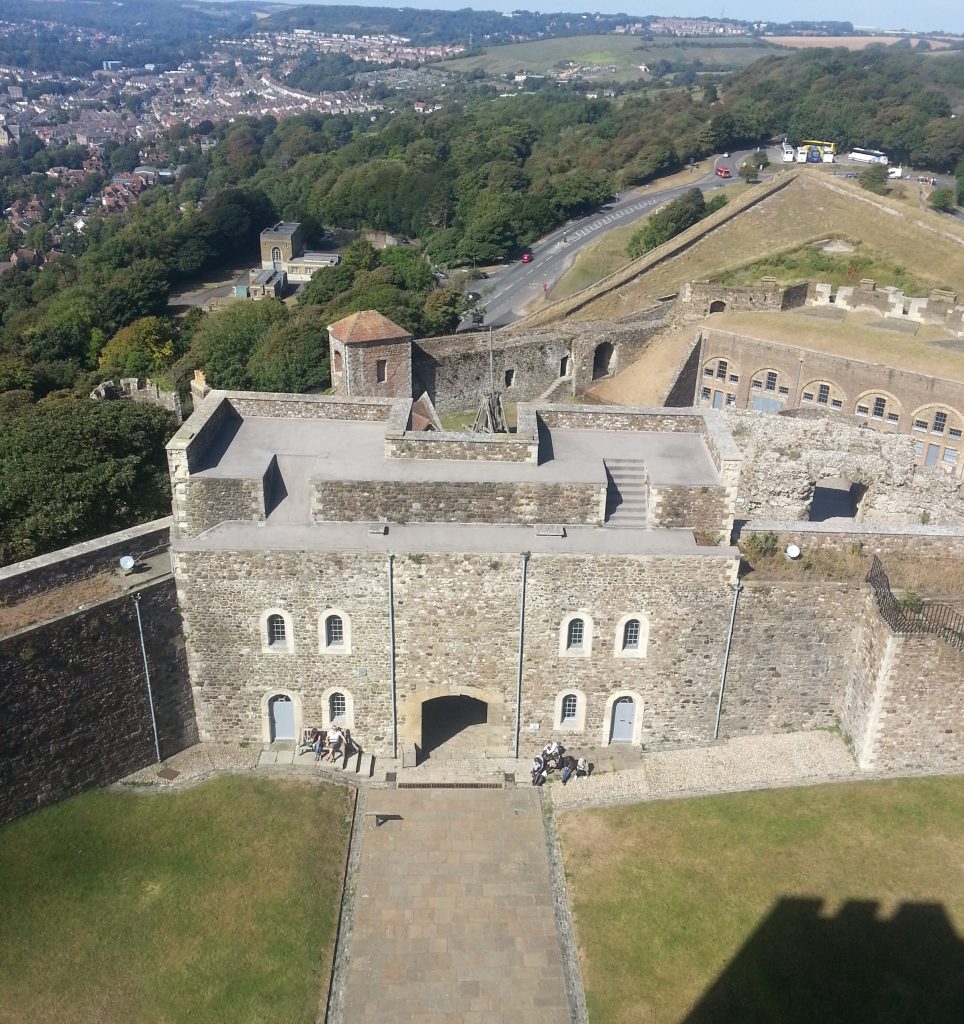
I soaked in the royal view for a while then made my way back down the stairs and on to the castle lawn. We perused the gift shop and Princess of Wales’s Royal Regiment Museum (where I learned that the The Queen’s Own Royal West Kent Regiment fought in the New Zealand Wars, an unexpected link between my temporary home and the home of my heart).
There was still more to see on these very historic castle grounds, so we headed back down the hill and through a steep passage to the secret wartime tunnels set in the face of the white cliffs. I’d been intrigued by what is visible of these tunnels from below when I walked the Bluebird Heritage Trail, so I was pleased now to be able to access them.

Intended as a safe underground barracks, construction of these tunnels was first begun in 1797 during the threat of Napoleanic invasion. Used again in the Second World War, this underground bunker served as the location from which Evacuation of Dunkirk was planned – the heroic 1940 operation to rescue Allied troops from continental Europe as the Germans advanced. Until 1984, this place was the official hideout for the regional government in the event of nuclear war (a plan that was abandoned when analysis suggested it would not be safe under those circumstances after all)
We found a military museum and gift shop, but could not figure out how to access the tunnels. In hindsight I think perhaps we were supposed to enter at the tour points we’d passed as we first entered the grounds. Oh well, with my heritage pass I can always come back another day.
Andy had to leave, so I did another circuit of the grounds by myself, enjoying the sun and atmosphere. Eventually I began to crave lunch, so I farewelled Henry II’s magnificent monument (although I promised to return!) and left in search of sandwiches.
References:




Another great yarn….There is another underground Hospital open to tourists in Mt Isa, Australia, that was used in WWII. Very intriguing.
Great. Looking forward to the 2nd visit.
A good introduction to the castle. Well done!